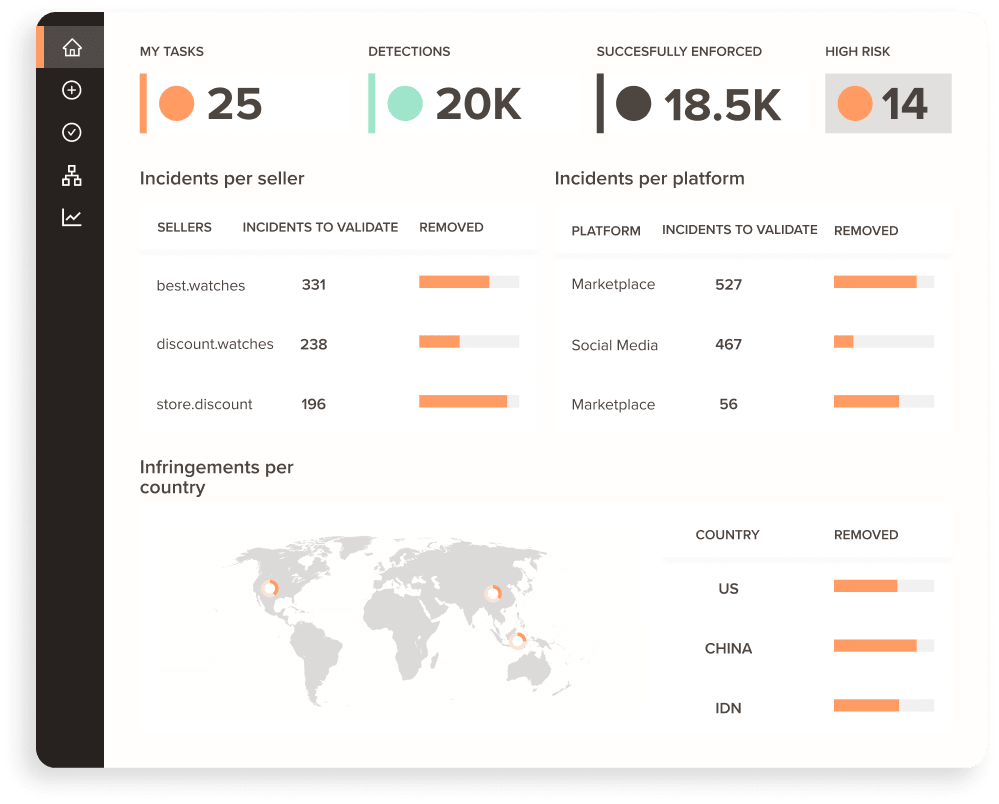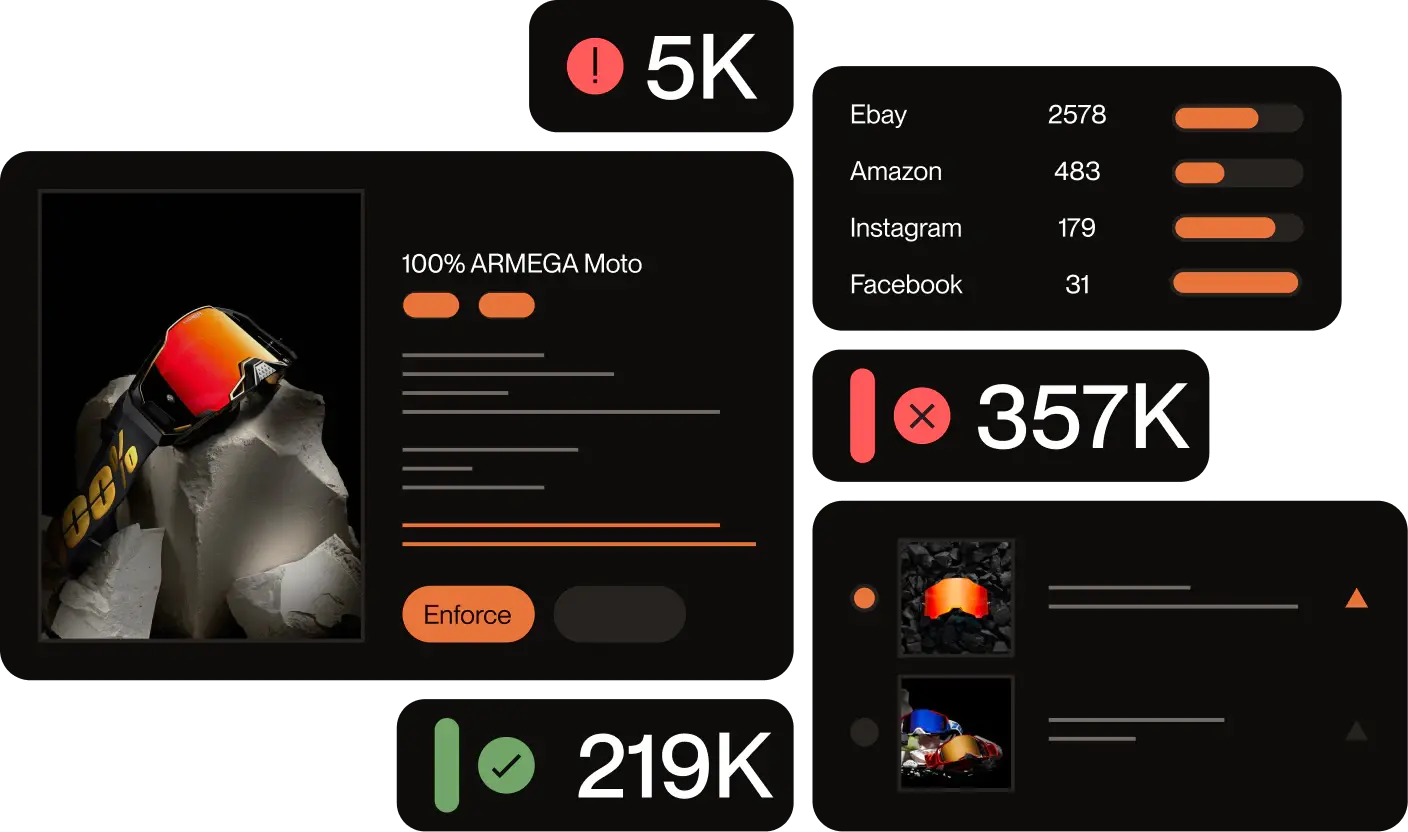Establishing a sound MAP policy as part of your overall brand protection strategy is an essential first step towards preventing price wars with competitors. However, your MAP policies are only as good as your enforcement scheme, because those agreements get violated frequently both by authorized and unauthorized resellers.
MAP violations can have severe repercussions for brands that include customer loss, reputation damages, breach of trust between business partners and revenue losses. That’s why it is important for brand owners to know how to enforce MAP pricing.
In this article, we show you how to protect your brand from MAP violation and give you the best MAP enforcement strategies available.
What is Minimum Advertised Pricing (MAP)?
Minimum Advertised Pricing (MAP), also referred to as MAP policy, ensures that an item can not be advertised below a minimum price which is set in an agreement between manufacturers, distributors, and retailers. MAP pricing policies intend to benefit both manufacturers and retailers because they assure the retailers’ margin and prevent the devaluation of a brand.
How is MAP pricing violated?
MAP pricing is violated when non-compliant resellers offer a product below the price that was agreed in the MAP policy between the manufacturer and its retailers. MAP violators break those agreements to get an advantage by offering items at a lower price than their competitors. Non-compliant sellers often entail further MAP violations as retailers tend to adjust their prices based on what the competition charges.
MAP pricing can be violated by authorized resellers and also by unauthorized sellers which often participate in gray markets by selling products of a brand without its permission. It is often easy for unauthorized sellers to offer products on third-party platforms and set competitive prices.
How do you enforce a MAP price?
Brand owners and IP managers are well-advised to see MAP enforcement strategies as an essential part of maintaining their MAP policies. Research has shown that enforcement of MAP pricing improves compliance. Below we show you the best options to enforce MAP pricing.
Cease and desist letter
Cease-and-desist letters are a good option to firmly send notice to sellers who undercut MAP policies with the intent to stop MAP violation. However, the document is not filed in court, it can only be used to notify violators that you’ll take legal action in case of non-compliance. In any case, the letter should identify the policy being violated and clarify what steps will be taken to enforce it.
Set rules within your sales & distribution network
Determining clear compliance guidelines for your distributors and retailers makes oversight and enforcement of MAP pricing way easier. Notify and remind your resellers that the MAP policy benefits not only your company but also the resellers in respect of protecting their profit margin.
You can point out that a reseller can offer a product for a discount as long as it is listed at or above your MAP. However, listing it below would mean a MAP violation. Outline pleasantly but firmly what MAP pricing enforcement steps you will undertake in case of a violation. This can be a warning notice for a first violation, an official cease-and-desist letter and/or the determination of a partnership with the seller in case of repeated violations.
Companies can also restrict where each retailer and distributor can sell their product. This can include the prohibition of online sales. However, this can diminish risks that evolve from selling on third-party e-commerce platforms, the downside is that some sellers might not be willing to sign a contract with such a restriction as some distribution companies seek additional sales from e-commerce platforms.
No matter what specific guidelines are included in your MAP policy, it is important to formulate them simply so that all parties are on the same page and know what to expect.
Amazon brand registry
When you are working directly or indirectly through resellers with Amazon to market your products, Amazon Brand Registry offers a great way to enforce your MAP pricing. The service enables brands to give the platform more information on their products and IP so that both brands and Amazon are better positioned to protect against violations.
Brands can use the Brand Registry process to limit the number of sellers that are allowed to sell their products on the platform. Additionally, you can claim invoices from sellers that reveal the distribution source of your products. Thereby, you can identify distributors who don’t comply with the MAP policy and take MAP enforcement steps.
Next steps
Within the modern online retail space, MAP pricing is more important than ever as online shoppers constantly search for the lowest price. Yet, an effective MAP policy only fulfills its purpose when you have a monitoring and enforcement strategy for MAP pricing. The most efficient way is to use a comprehensive brand protection software that covers large-scale price tracking and enforcement tools.










